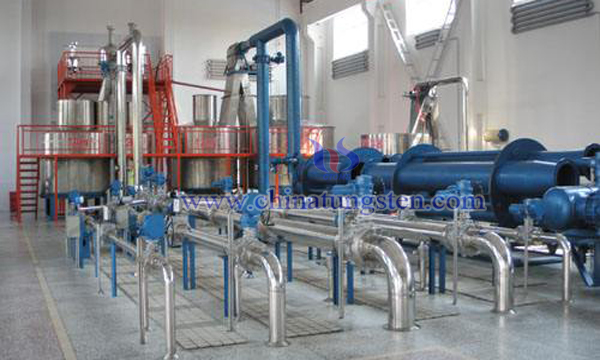Nano Tungsten Carbide Preparation by Reflux of Liquid Alkanes
- Details
- Category: Tungsten Information
- Published on Saturday, 29 June 2019 20:01
Tungsten carbide is one of the most important materials in transition metal carbides. It has excellent properties such as high melting point, hardness, thermal stability and mechanical stability. It is widely used in making cemented carbide materials and has important applications in cermet, mechanical processing, metallurgical minerals, aerospace and other fields.

At present, tungsten carbide is still the most commonly used material for making cemented carbides. In addition, the theoretical catalytic activity of tungsten carbide materials is close to the catalytic level of Pt. In some applications, tungsten carbide materials can replace platinum, iridium, ruthenium and other rare precious metal catalysts.
In order to overcome the shortcomings of gaseous paraffin pyrolysis carbon-cladding method in the preparation of nano tungsten carbide by carbothermal reduction, some scholars have tried a new organic carbon source and a new mixed coating method to prepare nano tungsten carbide powder. The process is called liquid paraffin reflux method. The specific procedures are as follows:
(1)Preparations: The volume ratio of anhydrous ethanol to liquid alkanes is 4:1-6:1, and WO3 is hydrated with 25-100 g per 500 ml liquid alkanes mixture. WO = is a sodium tungstate solution prepared from 0.6-0.8 mol/L. Under stirring, concentrated hydrochloric acid is dripped, white precipitation occurs first, and then precipitation turns yellow. At this time, the pH value is 0.1-0.5. The filter cake is washed several times with distilled water until it reaches zero. When the silver nitrate solution is used to test the presence of chloride-free ions in the filtrate, the obtained cake is WO3 hydrate.
(2)Reflux: The suspension formed by anhydrous ethanol and hydrated tungsten trioxide is refluxed for 1-10 hours at 40-100 ℃; then the liquid alkane mixture is mixed with the precipitated powder after refluxing with ethanol, and refluxed for 6-12 days at 100-250 ℃ until the formation of deep black precipitation. After filtration, the black precursor powder is obtained. The average grain size of the powder is 8_15 nm, and the specific surface is 30%. 0-400 m2/g. The filtrate of alkanes obtained from the filtration was extracted by water to remove ethanol, dried by anhydrous CaCl2 and then recycled.
(3)Drying: Put the high alumina ceramic boat with black sediment into the airtight tubular atmosphere furnace, and then fill in the flowing argon for 1-3 hours. Under the protection of flowing argon, the temperature rises to 80-120 ℃ and keeps warm for 0.5-2 h; then cool to room temperature; take out the sample and get the precursor powder of black carbon-coated tungsten oxide;
(4)Charging: The black precursor powder is loaded into the high-alumina ceramic boat and pressed, and sealed in the tubular atmosphere furnace.
(5)High temperature heat treatment: the corundum tube reaction chamber of tubular furnace is pumped to 0.09.
(6)Sampling: The precursor powders prepared under different reflux temperature and time were treated by different high temperature heat treatment processes. The products were extracted from the ceramic boat of the reaction chamber, and nano-WC powders were obtained with grain size of 20-30 nm and particle size of 30-60 nm.
The reaction process of preparing nano tungsten carbide by liquid alkane reflux method can be attributed to the inorganic transformation of organic carbon and carbothermal reduction reaction of composite precursor powders coated with WO3 core-shell particles.
- Tungsten Carbide Manufacturer & Supplier, Chinatungsten Online: tungsten-carbide.com.cn
- Tungsten News & Prices of China Tungsten Industry Association: www.ctia.com.cn
- Molybdenum News & Price: news.molybdenum.com.cn
- Tel.: 86 592 5129696; Fax: 86 592 5129797; Email: sales@chinatungsten.com



 sales@chinatungsten.com
sales@chinatungsten.com